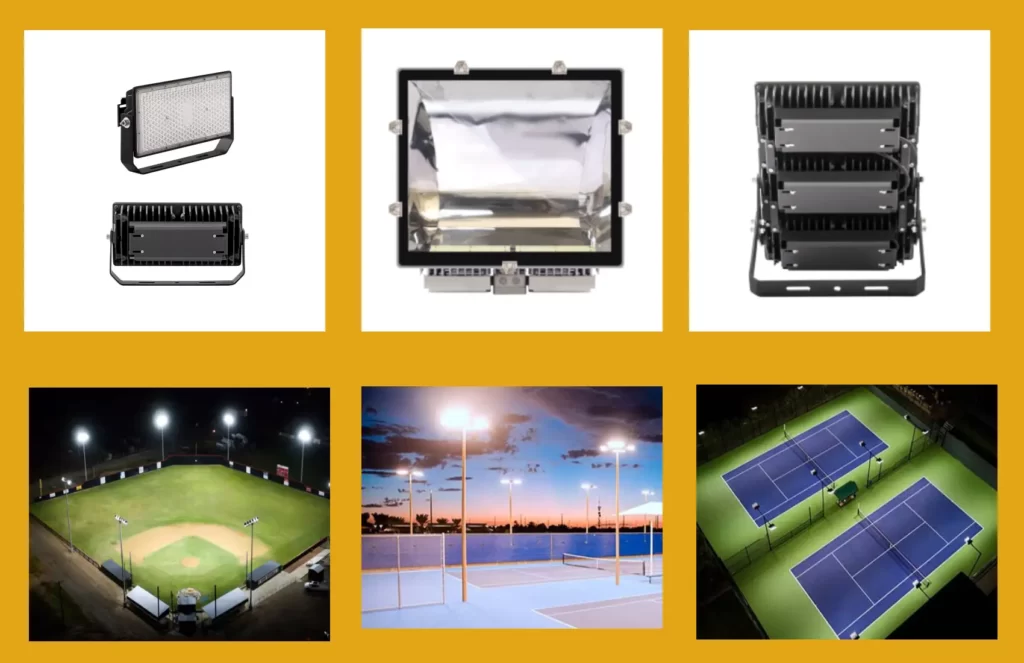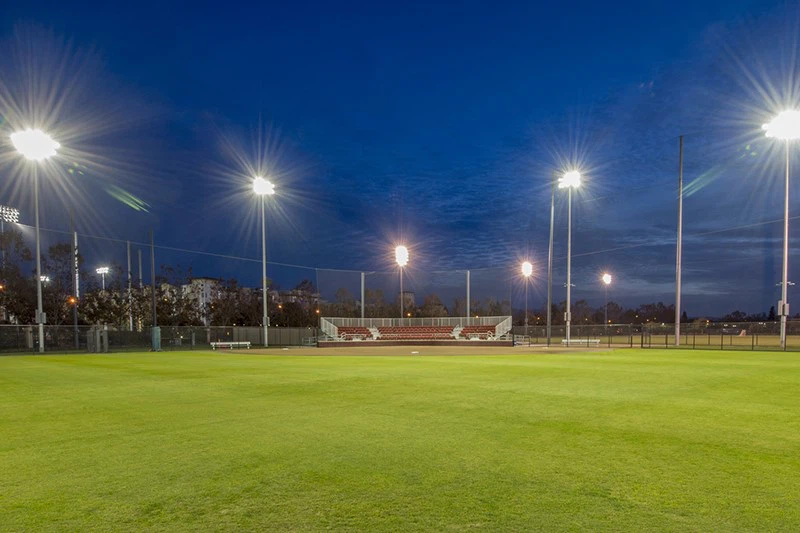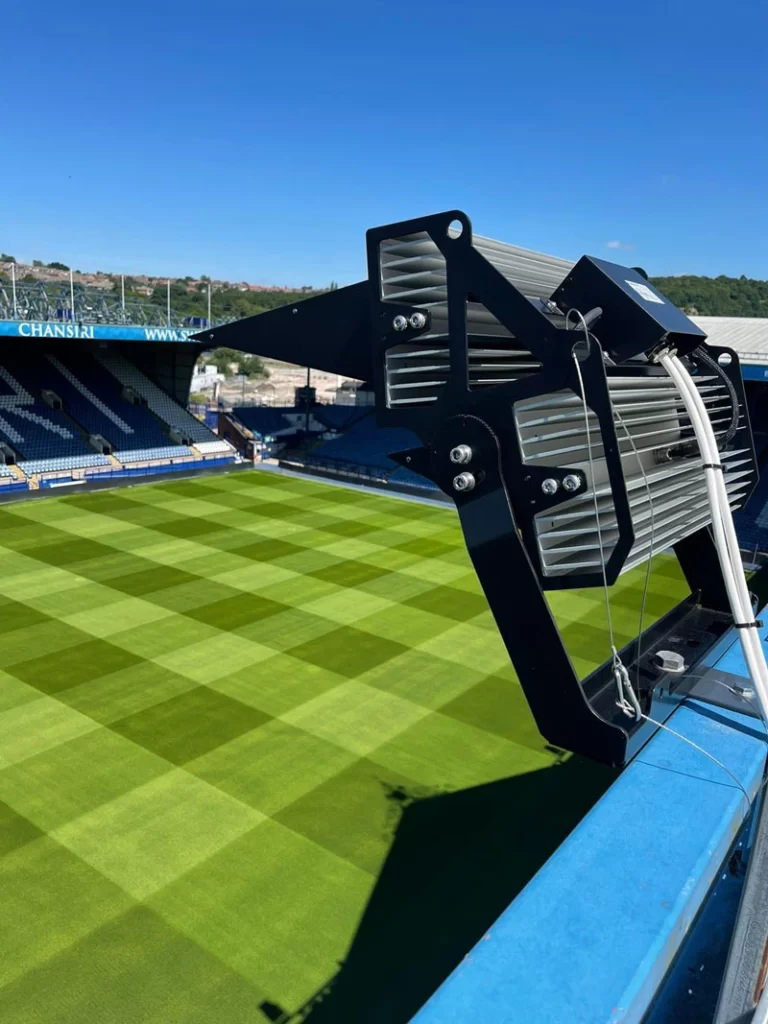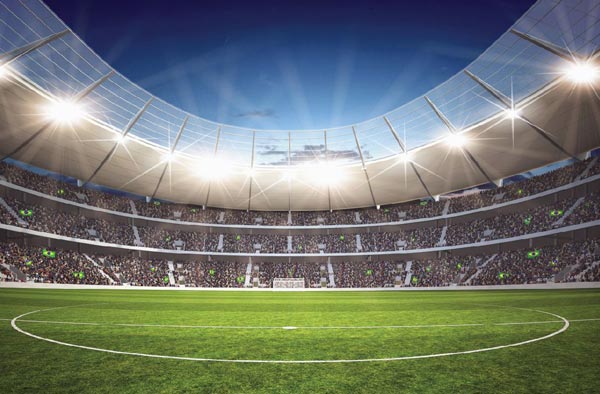Stadiums are among the venues that require professional and standard-compliant lighting. Proper illumination isn’t only crucial for hosting nighttime events but also significantly impacts player safety and enhances the experience for spectators attending at different times. To achieve optimal lighting it’s essential to know which lighting products are suitable. In this article by Shamim Andisheh Company, we provide comprehensive information on how to effectively illuminate stadiums.
A Guide to Choosing Lighting Systems for Large and Small Stadiums
Selecting the right lighting system for stadiums whether large or small requires careful attention to several key factors. Here are some essential principles and considerations:
- Uniform Light Distribution: Light must be evenly distributed across the sports field to ensure optimal visibility for both players and spectators.
- Choosing Suitable Light Sources: For large stadiums, metal halide lamps or LEDs are commonly used. LED lamps are particularly advantageous due to their lower energy consumption and longer lifespan.
- Vertical and Horizontal Illumination: Special attention should be given to both vertical and horizontal lighting for live television broadcasts and enhanced spectator visibility.
- Color Temperature and Light Clarity: Appropriate color temperature and high light clarity can improve the quality of television broadcasts and enhance the viewing experience.
- Energy Efficiency: Utilizing energy-efficient and high-performance lighting systems such as LEDs can help reduce costs and protect the environment.
- Lighting for Different Areas: In addition to the main field attention should be paid to lighting other areas of the stadium such as locker rooms, restrooms, concession stands, parking lots and entrances.

Professional Stadium Lighting The Impact of Illumination on Game Quality
Professional stadium lighting plays a crucial role in the quality of games and the spectator experience. There’re several key reasons why stadium lighting is of great importance:
Enhanced Player Visibility: Proper lighting helps players clearly see the ball, other players and their surroundings. This’s especially important in fast-paced sports like football and basketball.
Improved Spectator Experience: Spectators whether present in the stadium or watching from home through television broadcasts need to see all the action clearly. Proper lighting ensures there are no dark spots and everything is visible in high definition.
High-Quality Television Broadcasts: Broadcasting games on television requires professional lighting to deliver high-quality images without unwanted shadows. This is crucial for cameras and filming equipment.
Safety for Players and Spectators: Adequate lighting can prevent accidents such as collisions or falls. It helps players better perceive their environment and allows spectators to easily navigate stadium pathways and signage.
Enhanced Focus and Player Performance: Research has shown that proper lighting positively affects players’ focus and performance. Lighting with the right color temperature and sufficient intensity can create an energizing and stimulating atmosphere.

For Stadiums
To select the best LED lighting options for stadiums, several key factors should be considered:
- LED Chip Quality: The LED chip plays a crucial role in the lamp’s performance. Choosing high-quality chips can enhance brightness and extend the lifespan of the lamps.
- Beam Angle: The beam angle of LED lamps should ensure uniform light distribution across the stadium surface.
- Water Resistance: Waterproof LED lights are ideal for outdoor stadiums.
- Color Rendering Index (CRI): A high CRI makes colors appear more natural and realistic which is important for stadiums.
- Brightness and Coverage: LED lights should illuminate the entire stadium evenly preventing glare and dark spots.
- Energy Efficiency: LED lights consume less energy helping to reduce electricity costs.
- Safety Features: Ensure the lights are equipped with safety features such as bearings and locks.

Energy Saving with LED Lighting in Stadiums
Using LED lighting in stadiums can lead to significant energy savings. LED lights consume up to 90% less energy compared to traditional light sources drastically reducing electricity costs. Additionally they have a longer lifespan and require less maintenance. LED lights also offer dimming capabilities helping to minimize light pollution. These features make LEDs an ideal choice for stadium lighting being both economically and environmentally efficient.
Conclusion
Stadium lighting can significantly impact player performance and enhance the viewing experience for spectators. Therefore selecting the best lighting equipment for this environment is essential. At Shamim Andisheh Company, you can find a variety of LED linear and gas projectors in different brands, designs and sizes.
For more information and consultation feel free to contact us.

 English
English العربية
العربية

















